Maybe it was my Asian upbringing that taught me never to waste food, as my family used and ate every part of the vegetable, fish, chicken, pig, or cow that we brought home.
Or maybe it’s my ever-growing curiosity when it comes to food from the land… but when I walk around the garden, looking at all my thriving plants, I always think, Can I eat that?
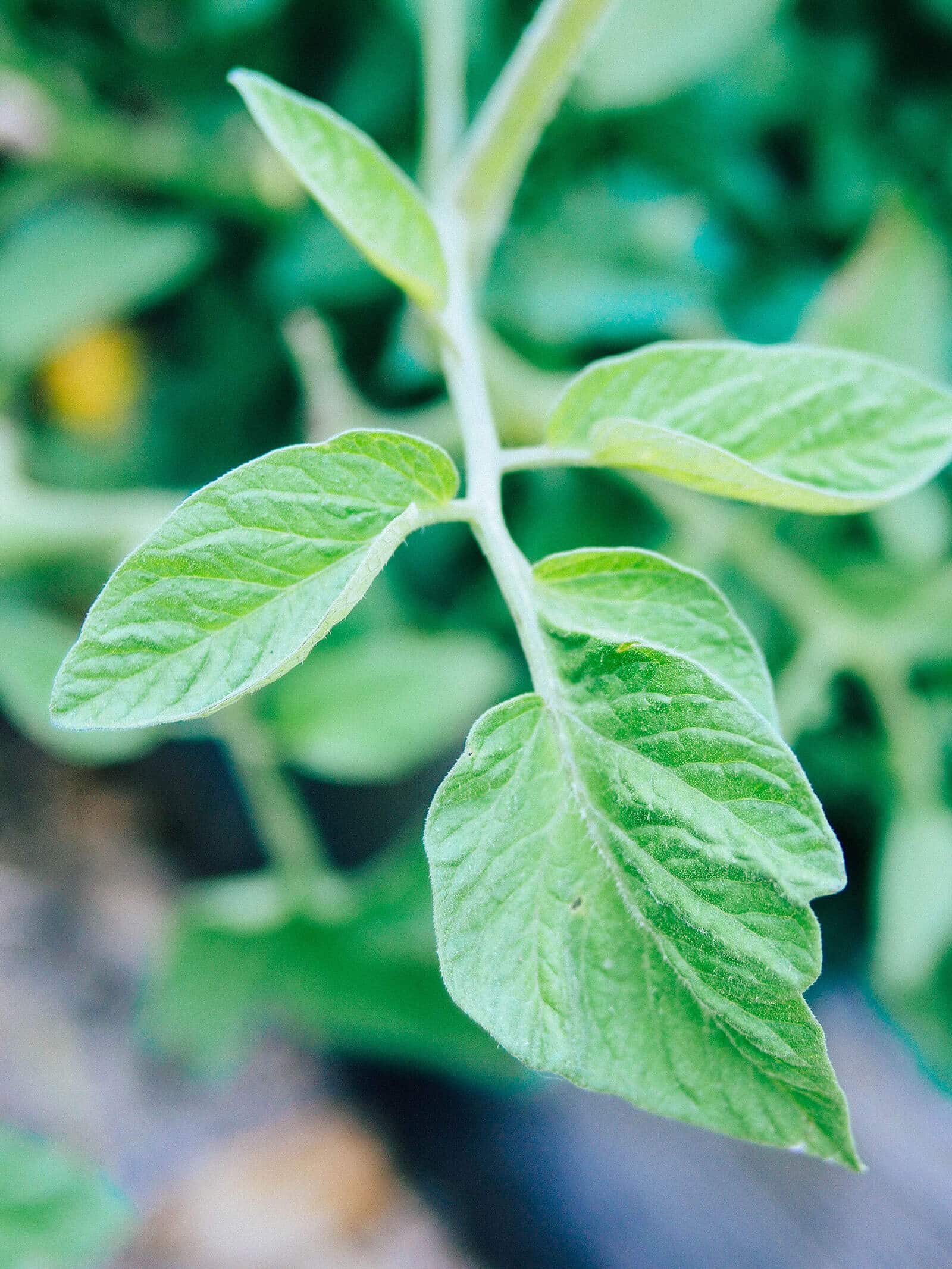
And by “that,” I mean the unconventional parts of the plant that you typically don’t think to eat. This was how I came to love artichoke stems, leek greens, and cucumber leaves, parts that are normally discarded or composted, but are in fact quite tasty.
Worth a read: These are all the edible parts of the vegetable crops you’re growing
So one day, when I was walking by my tomato plants, I started wondering whether the leaves were edible or not.
With vines that sometimes grow to 10 feet long, it seemed like such a waste that the leaves weren’t used when the amount of fruit seemed so small in proportion.
It got me thinking… Why don’t we eat tomato leaves?
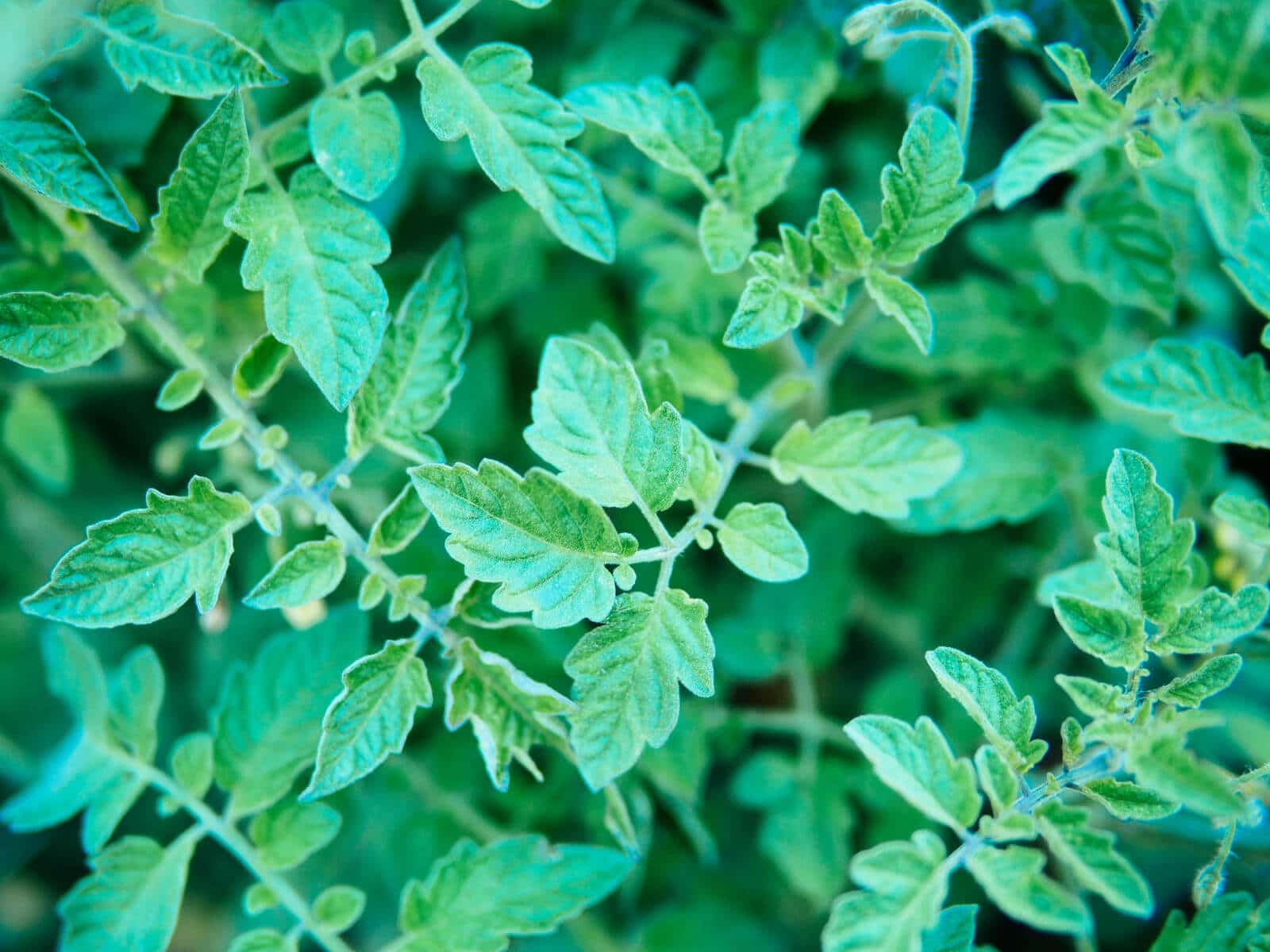
Popular culture has taught us that tomato leaves are part of the “deadly nightshade” family and thus, they must be poisonous. But I bet that more than a few people, if asked, would have no idea what that even means. It’s just what’s known. No questions asked—but we need to ask.
What is a nightshade, why are the leaves poisonous but not the fruit, and why don’t we see bunches of leaves in the supermarket if they aren’t poisonous?
Let’s take a look at all the myths surrounding the Solanaceae family and explore the science that says otherwise.
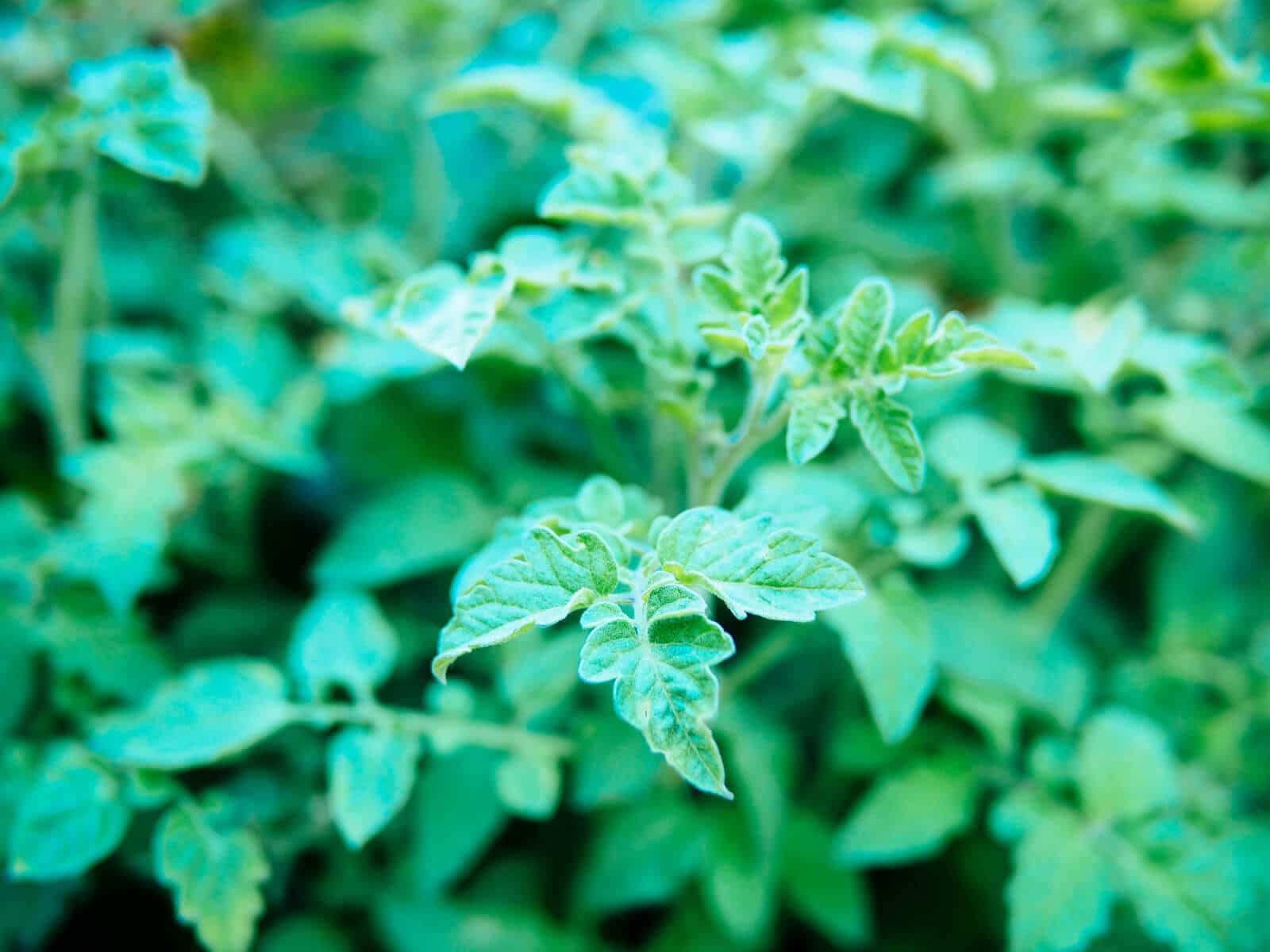
Myth #1: Nightshades are highly poisonous, so tomato leaves must be poisonous too.
When referring to the Solanaceae family of plants, many people call it by its more common moniker, the nightshade family.
Within this family are the vegetables we know and love, like tomatoes, tomatillos, potatoes, eggplants, and sweet and hot peppers.
But also within this family are the nightshades famously known to be toxic to humans, like black henbane, mandrake, and the “deadly nightshade,” also known as belladonna (Atropa belladonna).
Despite its nickname, belladonna, an herbaceous perennial, has historical use in herbal medicine as a pain reliever and muscle relaxer, a treatment for stomach and intestinal issues, and even as a beauty aid.
In fact, the name “bella donna” means beautiful lady in Italian. It comes from the outdated practice of women putting drops of belladonna berry juice in their eyes to dilate their pupils. The look was considered attractive in the day!
But rest assured that though tomatoes are distantly related to belladonna, they do not contain the chemical compounds that make belladonna (especially its berries) so poisonous.
The domestic tomato (Solanum lycopersicum) does have an interesting history however, as its scientific name, lycopersicum, is Latin for “wolf peach” and derives from German folklore.
When the tomato was brought to Europe in the 16th century, people believed it to be poisonous like other members of the Solanaceae family. Legend had it that witches used these hallucinogenic plants in potions to conjure werewolves. Since the tomato plant’s fruit looked so similar to that of belladonna, it was dubbed the wolf peach.
You see, tomatoes of yore looked nothing like the plump, juicy, fashionable tomatoes we know and love. Before modern cultivation, tomatoes grew wild in the Andes and they were tiny—the size of a blueberry. Their shape and color were often mistaken for belladonna berries.
These days, we know that while tomatoes belong to the (very large and diverse) nightshade family, they definitely aren’t of the deadly nightshade variety.
This ambivalence was later reflected in the tomato’s other accepted scientific name, Lycopersicon esculentum (translated to “edible wolf peach”).
As you can see, the bad rap bestowed on tomatoes is simply an old wives’ tale, left over from a less-informed era.
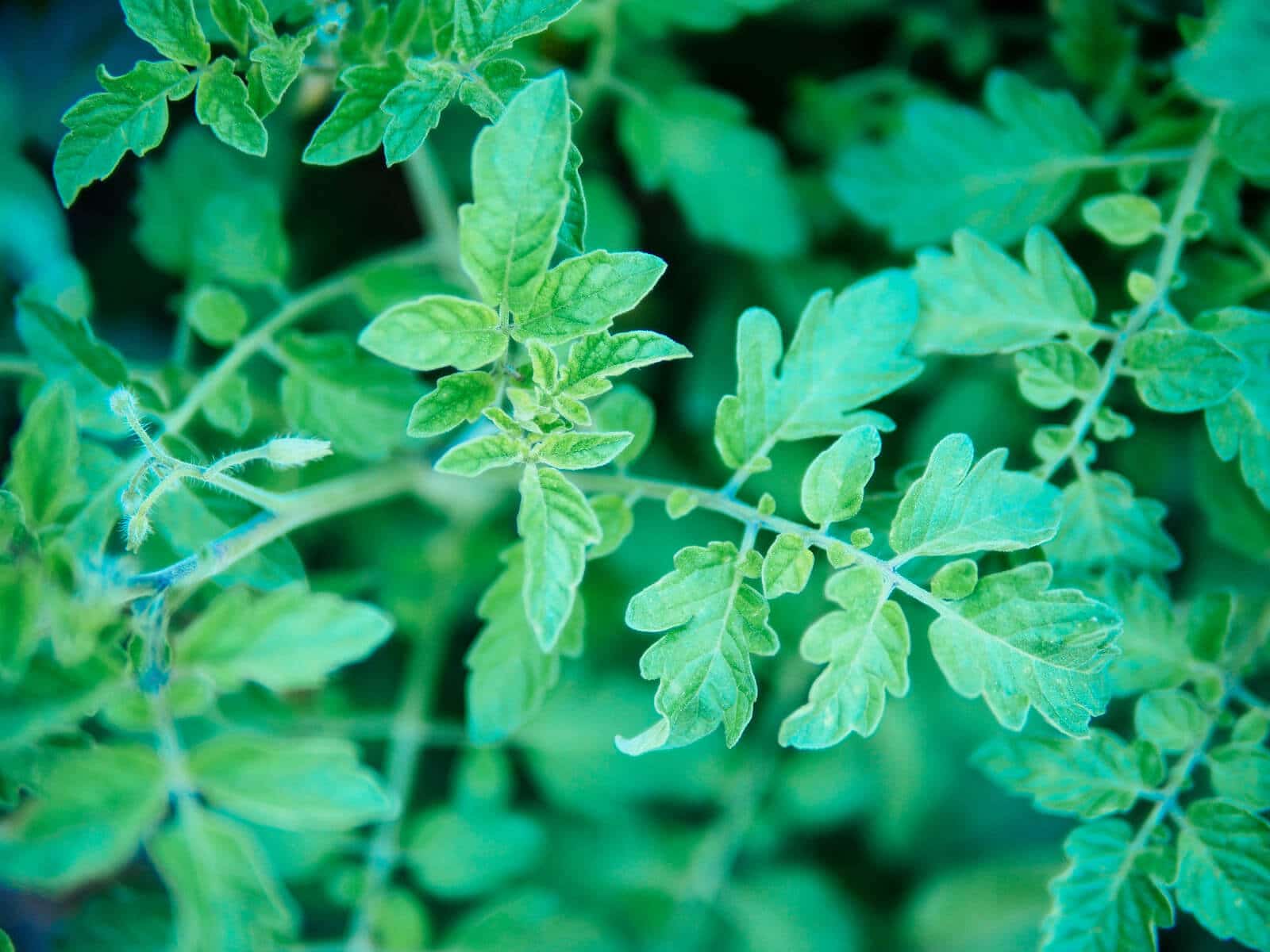
Myth #2: Tomato leaves contain toxic compounds called alkaloids.
As mentioned in my previous post on edible (and highly misunderstood) carrot tops, all vegetables contain alkaloids. Alkaloids are part of a plant’s defense mechanisms (existing in all parts of the plant to protect against certain animals, insects, fungi, viruses, and bacteria) and we consume them on a daily basis in various amounts.
That locally-grown heirloom bean and kale salad you had for lunch? Alkaloids. Those antioxidant-rich organic green smoothies you make every week? Major alkaloids.
While it’s true that some alkaloids are not good for you (like nicotine and cocaine), others can be good or bad, depending on your view (like theobromine, the stimulant found in chocolate, or caffeine, that Monday-morning life-giver).
Even though alkaloids are present in your everyday veggies, you could never eat enough of them in one sitting for the alkaloids to be harmful.
So what gives with tomatoes?
The major glycoalkaloid in the tomato plant is tomatine. (To put it simply, a glycoalkaloid is an alkaloid bonded with a sugar.) Tomatine exists in all green parts of the plant, including the stems, leaves, and green tomatoes.
(For the sake of clarity, whenever I mention “green tomatoes” in this post, I’m referring to the immature, unripened green tomatoes—and not the varieties of naturally green tomatoes.)
A study published in the Journal of Agricultural and Food Chemistry found that the highest concentrations of tomatine were found in senescent leaves, followed by the stems, fresh leaves, calyxes, green fruits, and finally, the roots (which had the lowest concentrations).
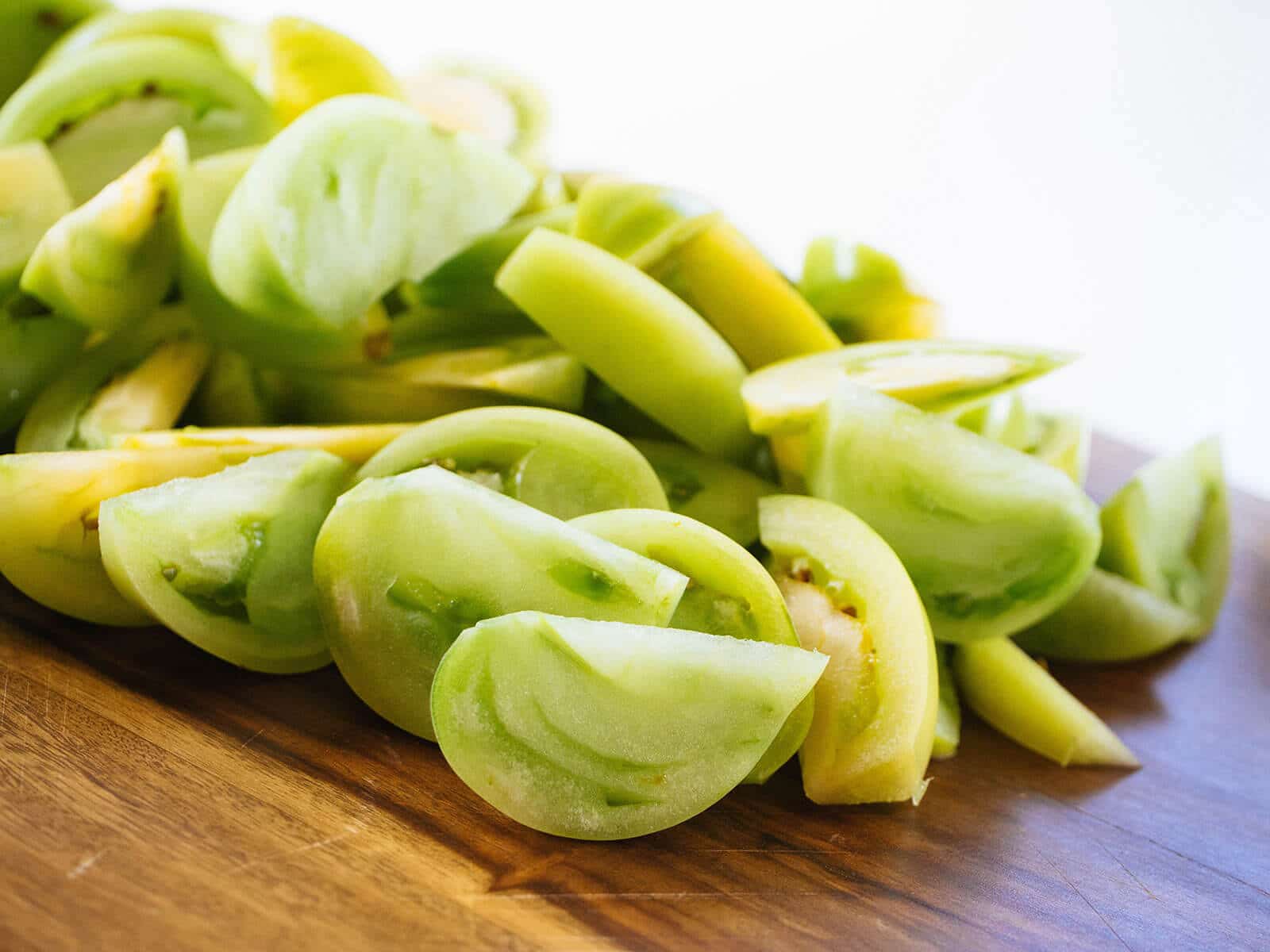
The difference in concentration between the fresh leaves and green fruits is negligible, so one isn’t necessarily “safer” to consume than the other. While tomatoes do show a decline in tomatine content as they mature and ripen, no one has ever thought twice about devouring a heaping of fried green tomatoes or homemade pickled green tomatoes!
Recipe to try: The best roasted green tomato salsa verde
Glycoalkaloids are also poorly absorbed by the gastrointestinal tract of mammals, and will pass through quickly to the urine or feces. In people who are sensitive to these compounds, stomach irritation may occur but they would have to ingest an unrealistic amount of green tomatoes or tomato leaves to experience ill effects.
So what’s the deal? Are tomato leaves poisonous or not?
Disclosure: If you shop from my article or make a purchase through one of my links, I may receive commissions on some of the products I recommend.
In the book Toxic Plants of North America, the authors wrote that a toxic dose of tomatine for humans would appear to require at least a pound of tomato leaves, and that “the hazard in most situations is low.”
According to this food safety study (which compared the potential toxicity of glycoalkaloids found in tomatoes, potatoes, and eggplants), tomatine is a relatively benign glycoalkaloid. It resulted in no significant changes to liver weight or body weight when fed to mice, and is not considered adverse to human health.
Another study has shown tomato leaves and tomato stems to have higher antioxidant activity and polyphenols (plant-based micronutrients that help fight disease and improve overall health) than tomato fruits. The following, a different study compared antioxidant levels in tomato byproducts and found that tomato leaves contain more powerful antioxidants than the stems.
What’s most surprising is the discovery of tomatine as a cancer inhibitor. The glycoalkaloid has been found to effectively kill or suppress the growth of human breast, colon, liver, and stomach cancer cells.
This study suggests that consumers could benefit from eating high-tomatine green tomatoes, and that there may be a “need” to develop high-tomatine red tomatoes as well (for the treatment of cancer and/or the study of tomatine as an anti-carcinogenic and anti-viral agent).
Judging from these studies, and the lack of evidence that tomato leaves are toxic for human consumption, I’ll have to give Myth #2 a miss.
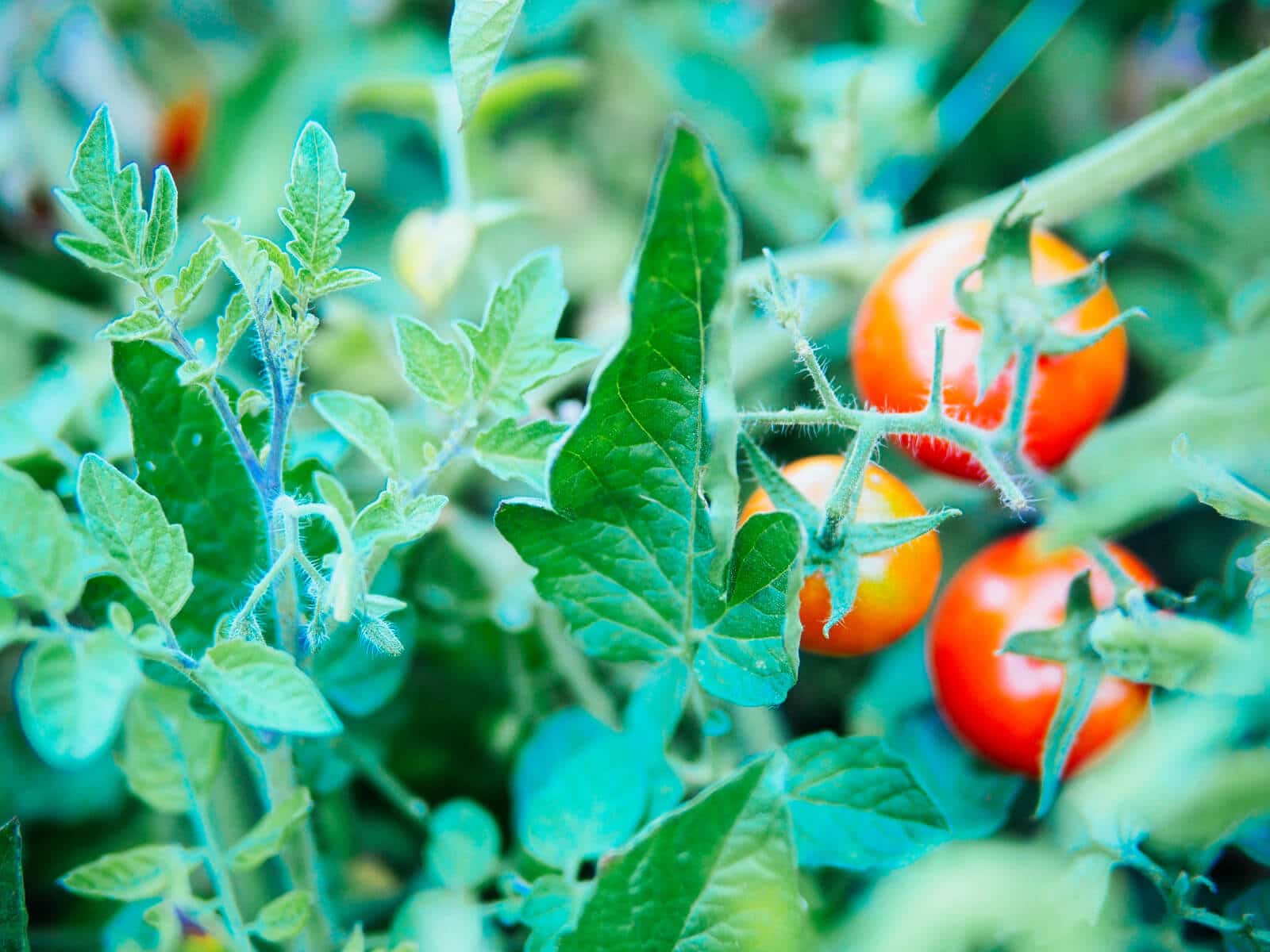
Myth #3: Dogs have died eating tomato leaves, so they’re definitely poisonous.
Somewhere along the way, you may have heard a story of someone’s dog dying because it ate a bunch of green tomatoes or tomato leaves. But is this cause for concern for you?
Here’s the deal: tomatine can be deadly for a dog if eaten in large quantities.
And the last part of that sentence is key—in large quantities.
Whether or not tomato leaves can kill a dog is very much a dose-dependent issue. As most pet owners know, dogs eat all kinds of crazy things and don’t really know when to stop. If they have unrestricted access to your garden and haven’t been trained to stay away from plants, it’s very possible they’ll chow down all your tomatoes, leaves and all.
For small dogs, especially, this amount of ingestion can cause diarrhea and vomiting at best, or a hospital visit in the worst-case scenario. This goes for many other plants in your house and garden, not just tomato plants.
Related: These are the safest houseplants to keep around dogs and cats
The list of edible plants that are toxic to dogs is long and surprising: lemongrass, chamomile, tarragon, borage, milkweed, purslane, and various parts of apples, peaches, and grapefruits.
Does toxicity to a dog equal toxicity to humans? Far from it.
There are other foods we eat freely that are known to be poisonous to dogs, such as chocolate, grapes, raisins, garlic, and onions. But the substances that are harmful to dogs don’t do the same damage to humans.
To date, there’s scant evidence in veterinary literature regarding the toxicity of tomato leaves. One study in Israel examined the possibility of livestock poisoning by feeding tomato vines to cattle for 42 days, but found no ill effects.
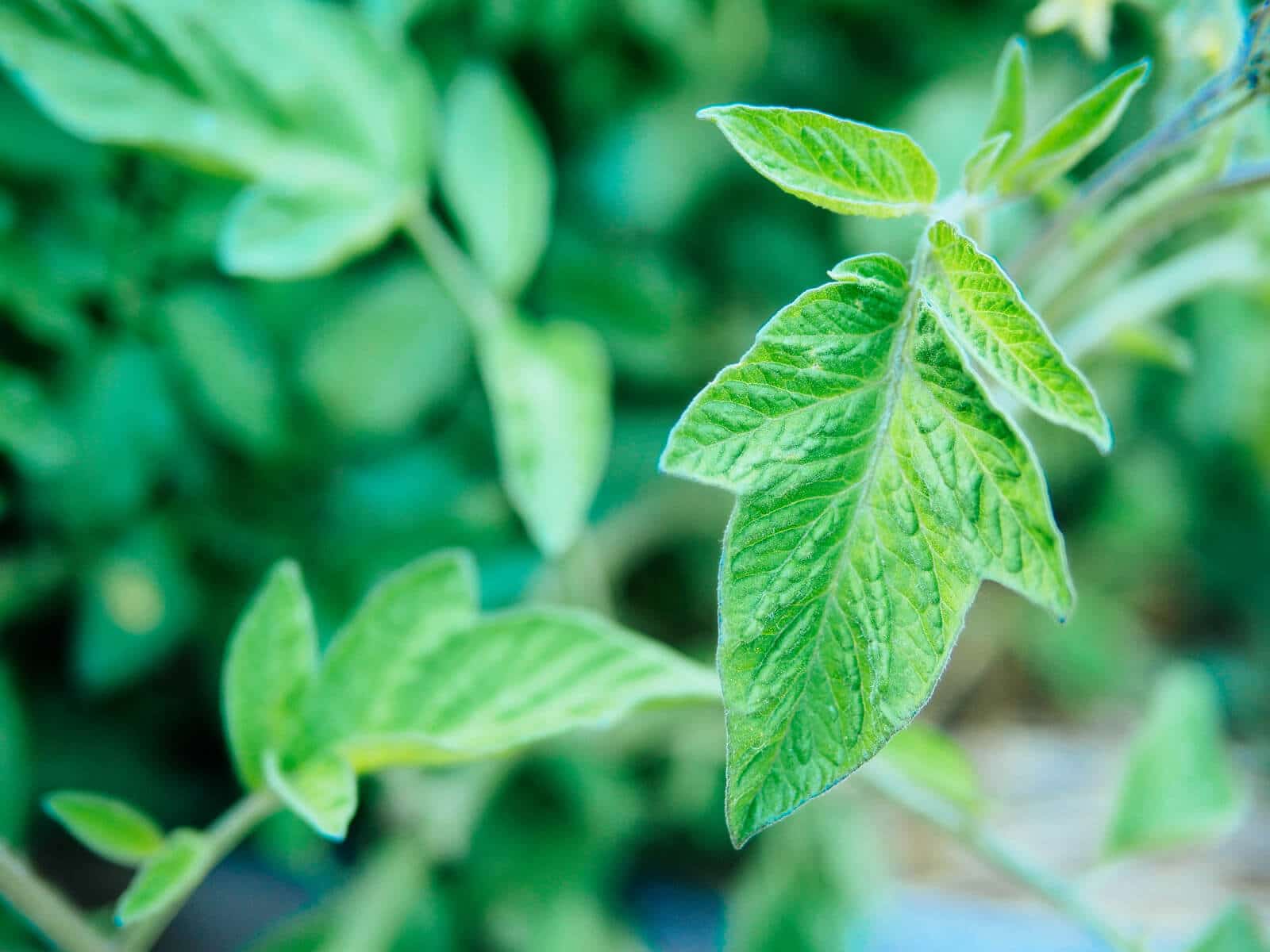
Myth #4: Organic gardeners make tomato-leaf sprays to kill pests, so that must mean tomato leaves can kill us too.
Tomato-leaf sprays are made by chopping and soaking tomato leaves in water, then using the sprays on various plants to control aphids.
Since tomatine, a glycoalkaloid, has fungicidal properties and is part of the tomato’s natural defenses, it makes sense that the compound could potentially protect against pests when extracted into a solution.
But theoretically, you could make a spray with any green part of the plant, like the stem (which contains even higher amounts of tomatine).
Unless you’re allergic to tomatoes, the tomatine in tomato-leaf sprays won’t harm you—and that’s why it’s used as an organic method of pest control.
Read more: Make your own non-toxic insecticidal soap
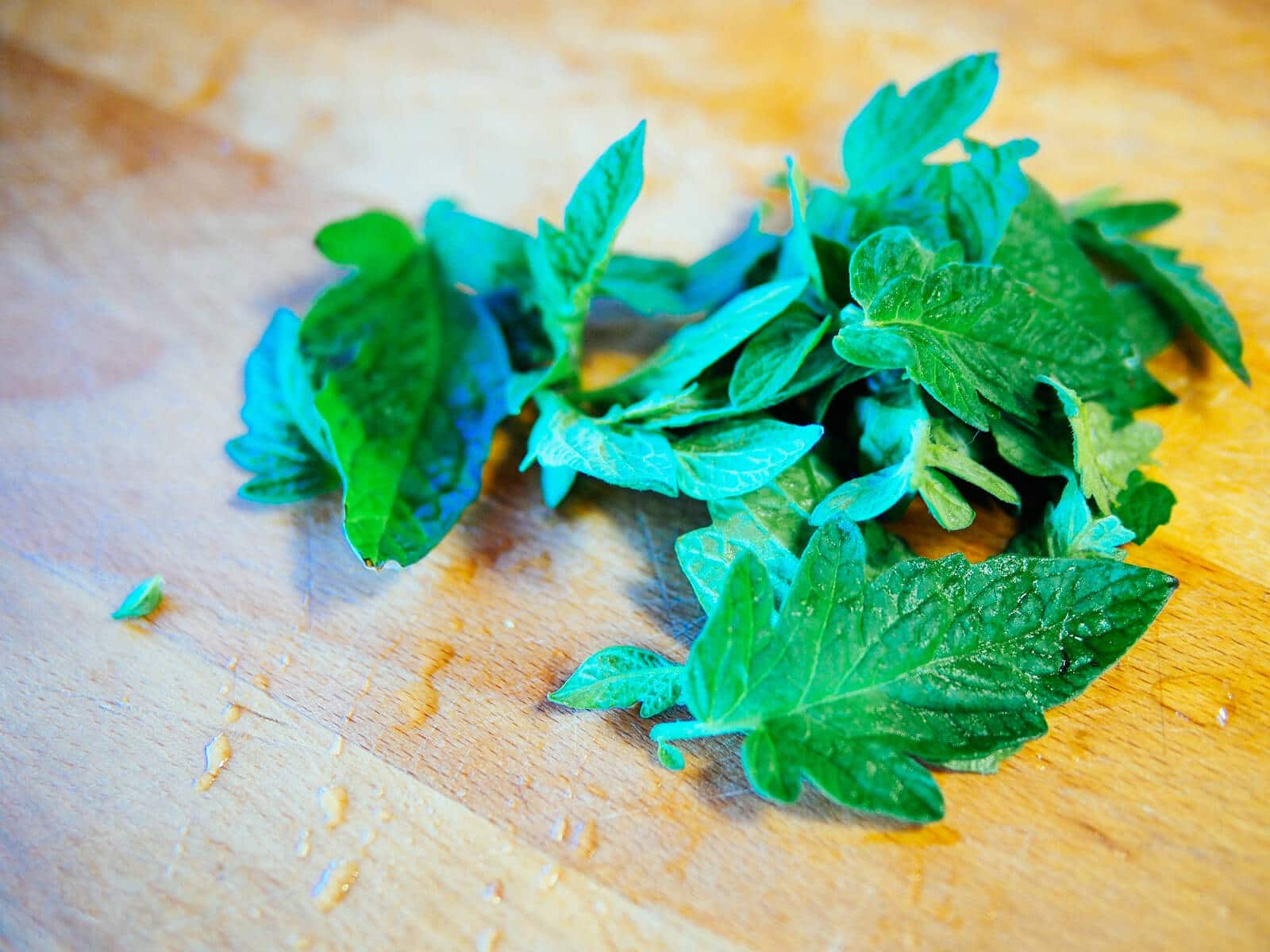
Myth #5: Tomato leaves aren’t sold commercially and no one has ever cooked with them, so that’s a sign they’re not meant to be eaten.
True, if you tried to search for recipes for tomato leaves, you aren’t likely to find any. In his book Cooking by Hand, former Chez Panisse chef Paul Bertolli included a recipe for leafy tomato sauce.
In The No-Waste Vegetable Cookbook, I have my own version of a spicy minty tomato sauce infused with tomato leaves, as well as tomato leaf pesto that’s delicious on pizza and sandwiches. Aside from those examples, however, not many people have stepped up and ‘fessed up to their culinary use.
But—and a big but—that does not mean they aren’t edible.
Until I started traveling to other countries, exploring their local cuisines, and cooking from my garden, I never knew all the possibilities of the plants I was growing. If you live anywhere outside of North America, you’re probably shaking your head at what we throw out!
Americans tend to favor sweetness, and many of the things eaten abroad are acquired tastes over here (such as bittermelon and burdock root). I imagine that tomato leaves—with their strong, earthy smell and flavor—are low on the list of desirable greens.
But tomato leaves are ripe (no pun intended) for experimentation in the kitchen. I’ve found them best used as an infusion so you can really capture the essence of a warm summer tomato without overpowering the main dish. Try infusing a handful of tomato leaves in olive oil (I love it as a drizzle on a Caprese salad) or infusing the leaves in tomato juice when you make gazpacho.
Another favorite technique is tossing thinly sliced tomato leaves with a bit of fish sauce, and using it as a savory garnish for rice or fish. Gently fried whole leaves of tomato also make a tasty topping for pasta, the way you’d fry sage leaves in browned butter. Dehydrated and crushed tomato leaves can be used as seasoning, perhaps folded into pizza dough or sprinkled over noodles.
Waste less food.
Get more nutrition.
All with the same vegetables you already know and love! The No-Waste Vegetable Cookbook is your guide to everything edible from all the plants you grow or buy—things you might not have known you could eat.
As for the rest of my garden, an adventurous appetite has led me to discover how delicious broccoli leaves are (you won’t find many recipes for those either), as well as cook with edible carrot tops, green nasturtium seed pods, crunchy radish seed pods, flavorful radish greens, and sweet, tender pea shoots (which are actually an Asian grocery staple).
Learning how to use the entire plant is my favorite “lazy gardening” strategy because it means I can get more food out of my garden with a lot less work.
The fact that tomato leaves aren’t part of the mainstream American diet doesn’t make them toxic by any means. People just don’t know what to do with them… yet. (Hopefully this will change in my generation.)
You know what is toxic though? The amount of food we waste in this country, and how Americans lead the world in food waste.
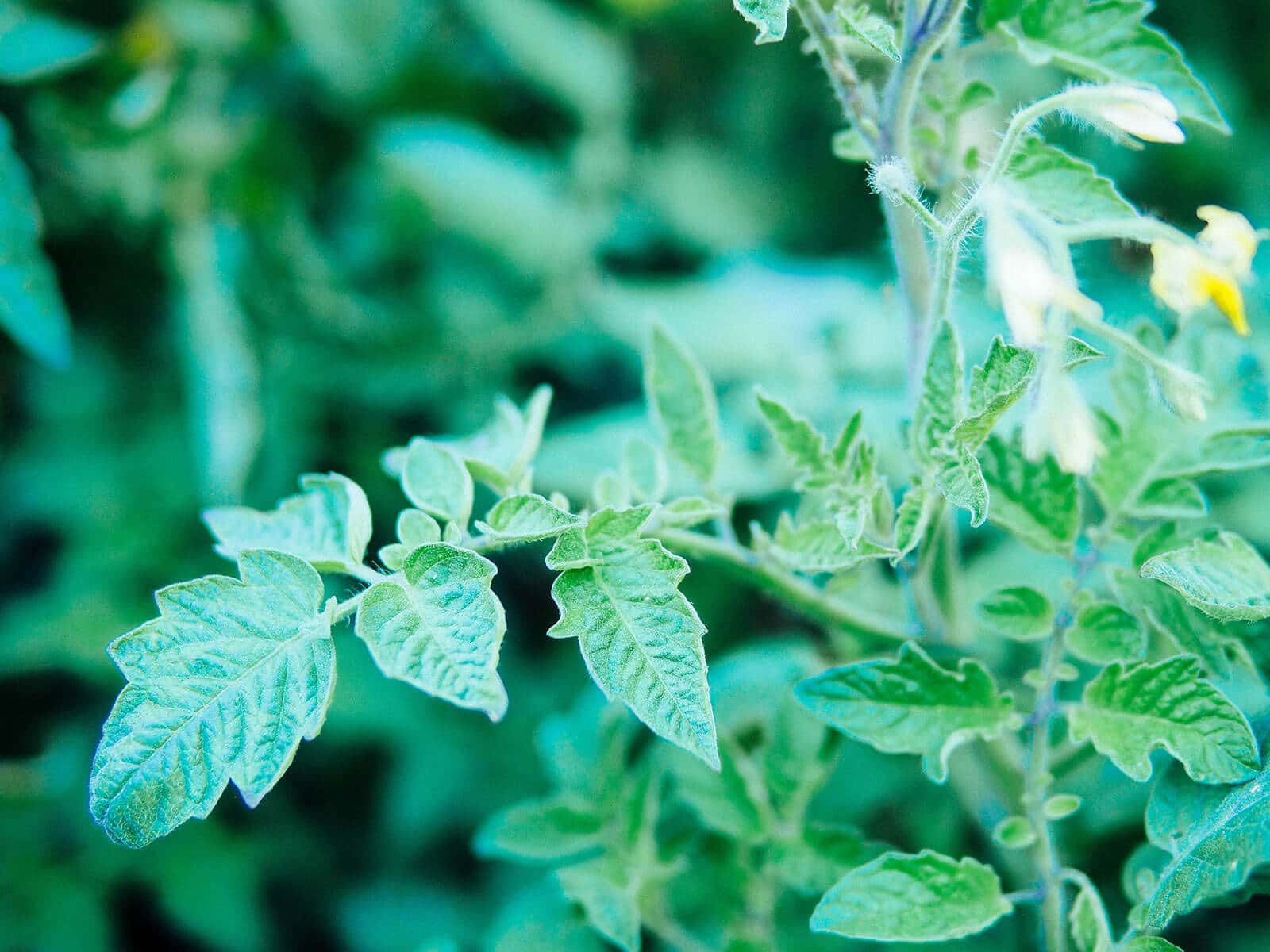
So, can you eat tomato leaves?
Contrary to popular opinion, yes—tomato leaves are flavorful, fragrant, and 100 percent edible. You can cook the fresh, young leaves like most other sturdy garden greens, such as kale, collards, or cabbage (leafy greens that need a little longer cooking time to become tender).
But personally, I like to use tomato leaves as an accent, where their strong herbal aroma adds a unique depth of flavor that you can’t get from tomato fruits themselves.
More tomato growing posts to explore:
- Grow Tomatoes Like a Boss With These 10 Easy Tips
- How to Grow Tomatoes in Pots—Even Without a Garden
- How to Best Fertilize Tomatoes for the Ultimate Bumper Crop
- How to Repot Tomato Seedlings for Bigger and Better Plants
- Why and How to Transplant Tomatoes (a Second Time)
- Planting Tomatoes Sideways: How Growing in a Trench Results In Bigger Healthier Plants
- Florida Weave: A Better Way to Trellis Tomatoes
- Conquer Blossom End Rot and Save the Harvest
- Can You Eat Tomato Leaves? The Answer Will Surprise You
- Why Tomato Leaves Have That Unique Smell
- The Power of Fermenting and Saving Tomato Seeds
- 4 Fastest Ways to Ripen Tomatoes in the Garden and Beat the First Frost
- The 30 Best Tasting Heirloom Tomato Varieties (By Color!)
- 83 Fast-Growing Short-Season Tomato Varieties for Cold Climates
- The Best Time to Pick Tomatoes for Peak Quality (It’s Not What You Think!)
This post updated from an article that originally appeared on August 20, 2013.


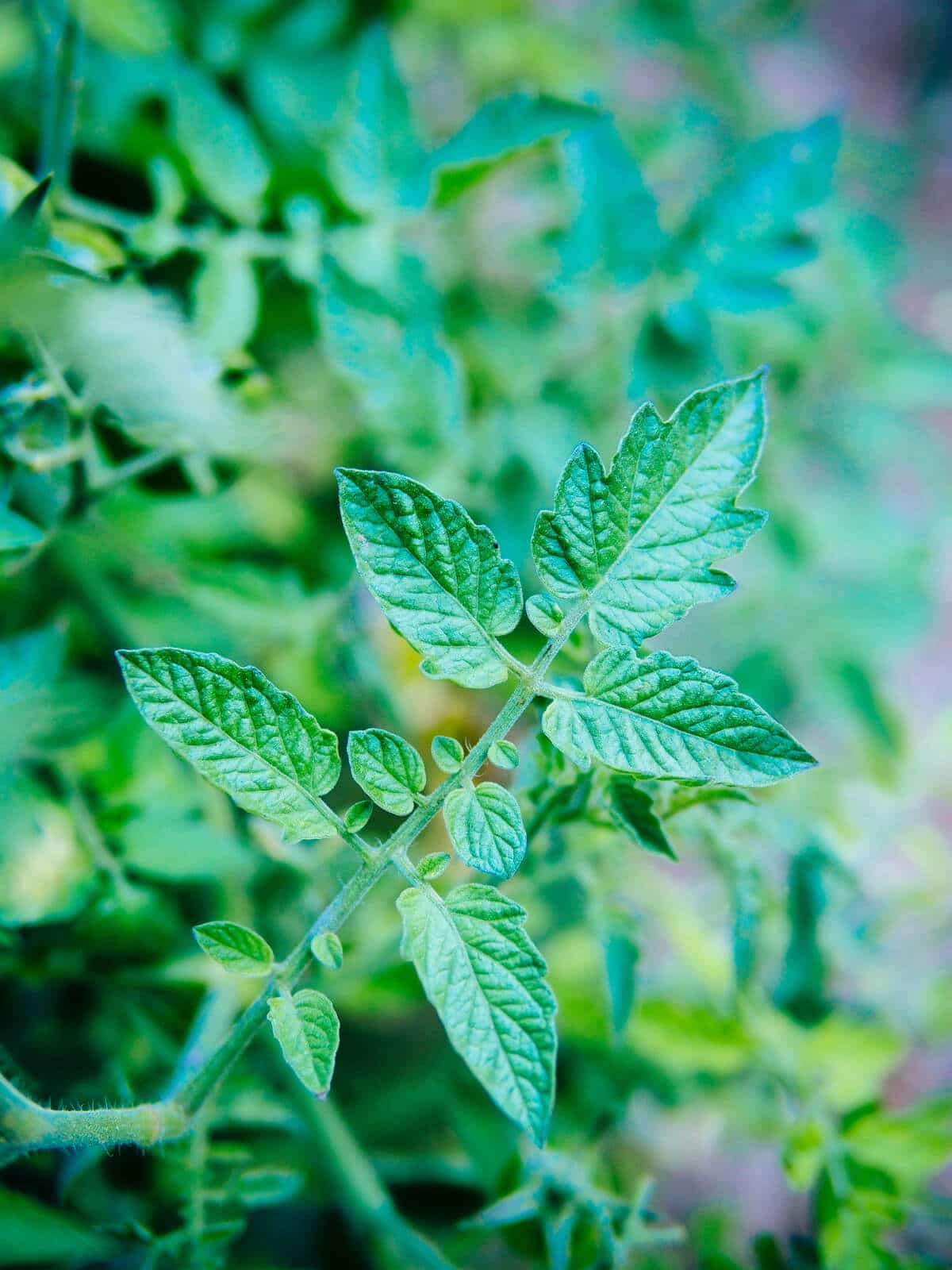













Perhaps we should recall that in many cases, it’s not so much about whether a substance is toxic or non-toxic, but rather that some people are more susceptible, and others are less susceptible to the ill effects.
The first time that I read your recommendation to eat tomato leaves a year or two back, I was skeptical. I added the recommendation in my own paper on topic: ‘Eat More From Your Garden Without Growing More’ with a cautionary note.. With the information in your current post, I’m convinced to give it a try. I too grew up with people for whom avoiding waste was second nature: New England Yankees (Father) and French Canadians (mother). My father’s family’s diet then was severely restricted during those years; my mother’s father was a woodsman who hunted, fished, raised some livestock, had planted his own orchard, and had two quite large gardens. His wife was skilled at foraging and would gather nuts, mushrooms, etc, from the surrounding forest. Others in my mother’s relatives were less fortunate, and one family lost 5 children to starvation during those years. With my parents, wasted food was unthinkable.
I’ve made green tomato relish for years, not even thinking about the plant’s green leaves as food (except for hornworms). I’m going to start saving those tender new suckers that are the tomato plants way of trying to compensate form the terminal shoots I’ve snipped to encourage the tomato plant to put more energy into ripening.
Your mention about the dosage of phytochemicals as relevant is particularly on target. Other plants have compounds that are essential to health, such as vitamin A, but are toxic (possibly even fatal), in large quantities. I witnessed one such event. I was under contract as horticulturist for a minimum security prison in Massachusetts. One of the prisoners assigned to help with my greenhouse took an extreme liking to carrots that we grew. They became his favorite, essentially exclusive, food. Soon his skin turned yellow and he was laid low with vitamin A toxicity. We wouldn’t then conclude that plants with vitamin A are necessarily toxic. But ingested in large amounts, they are.
I suscribe to James Dukes admonition: when eating unfamiliar foods, start with small amounts. Dosage is the overwhelming consideration.
We are in a time when large scale agriculture will falter more and more due to climate chaos. Think of where all the large scale agriculture is sited and then think about the weather they have been having. The situation is getting worse and the rate at which it is getting worse is also accelerating. Linda, you are doing a great service by helping be more food self-reliant and more food-utilization efficient. Thank you.
.
Some corrections about your history of tomatoes: Europeans didn’t import wild tomatoes, they imported varieties that had been selected for hundreds of years by the indigenous American communities. The berries were much bigger than a blueberry, at least like modern grape tomatoes.
I pick the green parts of onions, capsicum, turnip and many other vegetables, chop them up and put them in an omelet for breakfast every morning with no ill effects. Indeed, I believe it keeps me healthy. It is odd that people eat the fruits and tubers but throw the most nutritious parts of plants away.
Yes, most of the leaves from our vegetable crops are edible and delicious!
You have the most interesting and informative articles! Gotta make a “Garden Betty” folder in my browser Bookmarks.
Thanks, and have a good day!
Well researched and informative, I tried adding them to my soup after my tomatoes grew and some leaves had to be chopped off to balance competition for light, they smelled like tomato fruit but stronger flavor and based on my own understanding of alkaloids and the fact that whatever doesn’t kill you makes you stronger. (Although a small portion of my soup).
I’ve been researching wild and sometimes invasive plants that have potential food use and found that many “weed” species are Actually more nutritious than most common vegetables we consume regularly and if culturally adopted we’d be able to produce food that is healthy and yet require no fertilizer to grow in regions where they go invasive
Linda, you have me very curious now about eating tomato leaves. What do they taste like and are there any spices that they taste similar to? Also can you dry them to use them in cooking throughout the whole year.? I enjoy your articles and I do thank you for your articles!
Have you any information related to septoria and how to treat it naturally I really need something that may help
Look into books by James Duke. He was the ethnobotanist for the USDA for years, and upon retiring, wrote books about health benefits of cultivate and foraged plants. (He is probably deceased now.)
Every summer I have a garden full of tomato, cucumber, pepper and bitter melon plants and always eat the leaves. I’m actually eating a hotpot with tomato and bitter melon leaves as well as sunflower leaves (as well as lentils, tofu and potatoes) whilst writing this. So much nutritious food gets wasted.
We need to educate the supermarkets.
Don’t let your kids eat them! I let my 6yo son eat a handful of the leaves after reading this article, and he ended up having stomach cramps, dizziness, and an elevated heart rate!
I’m so sorry this happened to your son! My own children have sampled tomato leaves with no ill effects.
Sorry about your son’s experience with tomato leaves. I know with horses in the springtime when you first let them out to eat grass, let them eat for a little bit and put them back in the barn, that way their stomachs get a chance to build the necessary compounds in order to digest it. And also with eating mushrooms I talked to an expert and he knew his mushrooms very well, he had a brother-in-law that was staying with them and he was told not to eat too much, as you have to give yourself a chance go build up the compounds you need to digest it, he ate too much and ended up very sick, his brother-in-law ate the same amount and was fine, both ate the same kind of mushroom. So the moral of the story is eat a little bit till your body gets used to it and then increase it a little bit. From the article it sounds like Linda uses it more like a spice so there shouldn’t be any problem with that amount.n
Tomato leaves are bad for the kidney in excess, right? Some sources I have perused seem to suggest that they have a good amount of kidney stone-causing calcium oxalate.
I came across this after reading about pruning my tomato plants and the first thing that popped in my head was: can I make pakora from that?! Garbanzo flour, ice water, salt and pepper… and literally any vegetable or spice you want (I make them spicy for me but only add salt and pepper and a little paprika for the kids when making thinly sliced potato ones)…. Add it to hot oil and you’ve got pakoras!!
I think in English they’re called fritters but there is no need for egg in these, they are just smaller and need deeper oil to form a nice snack-shape.
Now, I’m gonna have to try tomato leaves in the form of ribbons (added to spinach and zucchini probably, or Julianned potatoes) but also maybe a few whole to see if I can preserve that little end-leaf look for a garnish!
All of this information is extremely important. I will share.
Thank you Carly!
Enjoyed your post a lot. I don’t eat tomato leaves in any quantity but do like them snipped over pasta with roasted tomato sauce. And it never fails to amuse me how het up Americans can get about the “deadly danger!!!” of practices that are common elsewhere in the world. Don’t eat a pound of tomato leaves, since that could be a dangerous amount. I doubt that I have ever eaten more than three leaflets. They have a strong taste and are more a seasoning than a bulk ingredient. People who fear the leaves, like their ancestors feared the “deadly poisonous” tomato fruit, are always perfectly free not to eat them.
Thank you for writing a well-reasoned, thoughtful article.
You ruffled some feathers. Good. My fellow Americans don’t like to think they are ever mistaken.
And kudos for your thoughtful, measured responses to the ruffled. Well done.
What a load of bull this article is. You mention belladonna as having been used for cosmetic purposes by women to dilate their pupils, sure, but you also very conveniently fail to mention that it caused vision loss and blindness over time. Of course you would exclude saying that; it would’ve gone against your own argument that “Myth #1: Nightshades are highly poisonous”, wouldn’t it? How can you be taken any seriously when you commit such a fragrant omission of details, while defending such a stance? This whole thing is intellectually questionable, and laughable at best.
You seem to misunderstand what was stated in the article. My argument in Myth #1 was not that belladonna ISN’T toxic. It’s that certain nightshades contain toxins known to affect humans, while other nightshades do not. The part that you specifically questioned explains how belladonna got its name.
(But for the record, this eye drop practice was carried over into the Civil War and atropine drops were used to dilate soldiers’ pupils for eye exams. Today, certain compounds from belladonna are used in various modern medical treatments.)
Also, it is the fact that the eyes are forced to remain dilated and therefore unable to adjust to changes in light that causes the blindness, not the belladonna itself. You “could” test that by staring at bright lights for long periods of time without using belladonna drops, but I don’t recommend it, as it WILL cause loss of sight eventually…
You sound pretty belligerent. She made it very clear that not all nightshades are deadly nightshades. For example:
“…rest assured that though tomatoes are distantly related to belladonna, they do not contain the chemical compounds that make belladonna (especially its berries) so poisonous.”
I grew up eating tomato leaves in small quantities. My mother was taught to include a leaf at the top of a jar of canned tomatoes to enhance the flavor much like others put a basil leaf. In Bamberg, Germany, I saw tomato leaves being sold in bags weighing a kilo at the farmer’s market. The seller told me that it was mainly used in salads in combination with lettuce. I’m told that my great grandmother fed tomato leaves as a treat to the goats she herded as a girl back in France.
I’m always interested to hear how other countries use their produce compared to the United States. That’s fascinating!
I’m afraid you are doing people a disservice, here. Whether or not you are “technically” right, which is still in doubt, you are implying there is no harm in tomato leaves. You are also not accounting for differences in varieties. I would expect more pest-resistant varieties to have higher levels of toxicity than other varieties. Let’s not forget there are humans other than giant adults walking around the garden, picking things that look tasty and eating them, namely my 18 month old — who shall not be allowed to eat the leaves of my Lemon Boy.
Unless you grow, buy, and eat 100% heirloom vegetables, you should expect some of your produce to have characteristics like pest resistance bred into them.
I’ve been using tomato leaves for decades to treat bee stings (and related swelling from the poison) and fire ant bites. (just squeeze a green leaf between thumb and forefinger and rub the juice on the pain) I never thought to try eating the leaves, but since I eat the leaves from most of the veggies in the garden, I think this article has interested me in giving tomato leaves a try in some dishes.
Thank you Linda Ly.
You’re welcome! And that’s very interesting about using the leaf juice to treat swelling. I’ll have to read into that more, I’m intrigued.
They work effectively because of how small the contained biochemistry of insects/pests are. For humans, the worst we will experience is some temporary irritation of the cells lining the digestive system. Additionally, dried and crushed tomato leaves have been used as a bittering food agent in cuisines of many cultures for ages!
Tomatoes leaves are really toxic, they contain tomatine and solanine, it’s not a myth, it can kill a dog, or even you if you make an infusion. A few leaves won’t kill you, because there’s no enough poison. But the toxicity do exist. If you cook them, it’s probable it reduces the toxicity, but it won’t wipe it out completly, that will be a myth. I prefer to eat the fruit, and let the toxic plants, even with a low toxicity.
Please, don’t call a myth something that is in biochemistry and medicine books!
I won’t repeat what I’ve already written and cited in my post, but lots of compounds in various edible plants are considered “toxic,” including those we don’t think twice about eating every day. (The tomato fruit, by the way, also contains tomatine and solanine, especially the less ripe it is.)
No, and no. Ripe tomatoes don’t have solanine. Be scientific please!
Tomatine in ripe tomatoes (fruit): 0.03-0.08mg/100g
Tomatine in tomatoes leaves: 14-130mg /100g (fresh)
Yes: 130 !!!!!
Do you know what is 130 in comparaison with 0.08??
It’s a factor 1625 !!!!!!!!!!!!!!!!!!!!!!
0.08 X 1625 = 130mg !!
You need to eat 1625 times more fruit than leaves to reach the same amount of toxicity.
That makes your claim sounds like a joke.
It’s a nonsense to say that tomato leaves are as toxic as tomatoes! A big nonsense.
Read that, do you really thing you have the education to contradict people who have degrees in medicine and chemistry, and are specialists, worked all their life in chemistry and physiology? Do you think “botanical online” are just clowns?
botanical-online.com/en/food/tomatoes-toxicity#Do_tomatoes_also_contain_solanine_and_tomatine
Quoting them: “Do tomatoes, when green, also contains these principles. As the mature, they lose them, so that, when ripe, the amount you have is too small to be considered toxic.”
Is it the case for green tomatoes and leaves do you think? When the amount is X1000?
Botanical online, and everyone who is a scientist, said that ingesting leaves is highly toxic, and can cause “gastrointestinal, liver, and heart damage”.
So, your advices, to eat the thing that every doctor and scientist consider as toxic and able to damage the heart and the liver, is really insane.
All of the facts I provided in this article are linked to credible scientific sources (medical studies or journals). I am not familiar with the site you mentioned, nor do I know where they get their information from as they don’t cite their sources. I’m always happy to do more research on interesting topics like this one where much of the science is still nascent.
LIL BTW i’ve been eating tomato leaves for some time now as i’ve been growing them in my garden. I ALSO eat the green tomatoes with have the most tomatine and solanine this is coming from my PERSONAL experience and i’m still alive!
Why don’t you grow a pair of tomatoes and find out for yourself instead of copying and pasting ballshit from google making out your smart when I literally eat tomato leaves everyday and i am fine.
Perhaps learn to write like an adult instead of like a hyperactive 3rd grader before you demand better quality evidence from people. You cited what is essentially a blog, that is not a scientific evidence or any kind of evidence at all.
Not every “scientist” claims that they are toxic and in fact I couldn’t find a single credible source confirming that it is, so I wonder what did you consider “scientists” when you wrote it. Your 3rd grade teacher perhaps? Shame on people like you for spreading ignorance online, and shame on google for quoting your ignorant opinion in search results instead of the actually cited contents of this article.
PS. If you think scientists can never make claims they didn’t verify well enough then I do indeed think that YOU are a clown.
I’ve been eating tomato leaves for years. I’m a retired biologist. One of the things I’m not sure was in the article is the fact that tomatine bonds to LDL cholesterol, and carries it out unchanged in the feces. I’ve been eating it for that, and for the effect it has on myriad cancer cells, and because they are delicious. I have reviewed the professional literature fairly extensively on this subject. If you know more about this through research, then yes, please share. If you are speaking on the subject without knowledge, you do a disservice.
If a person eats tomato leaves for years, and if you are biologist, you know it’s not a criteria to say it’s innocuous. A non-biologist would give this as a proof, not a biologist. Sorry, but I trust biologist working in toxicovigilence and anti-poisons centers and medical literature more than a few persons who used it without noticing nothing wrong. That’s not science. If you published studies on it, of course it would be true gems to read, and if you want to not do a disservice, paste the links. Send your studies to the anti-poison centers if you can prove it’s totally innocuous. We need proof. So, you basically say that medical literature is wrong and that it’s totally safe? If you tell me “I and my friend” did that with nothing wrong, it’s nothing, non scientific and deceptive. If you paste the studies, it’s factual. Only studies can show it’s safe at any level.
It’s true that studies shows that tomatine has an action on cancerous cells, and LDL. But it doesn’t mean there’s no side effects, and that you will get the right dosis by eating the leaves, and not a deletarious quantity. Sorry, but as long as I don’t see a study that proves that it’s safe to eat any amount of tomato leaves, I’ll continue to say that’s a crime to give such advice. Staying with great majority of the toxicologists advice to not eat, it’s the wise move.
All of the facts I state in this article are linked to scientific studies or journals. I will say, however, that not every vegetable we can consume (such as broccoli greens or radish greens) has been “proven safe” by science.
Eating a pound and a half of spinach has enough oxalic acid to kill you too. If that’s how much tomato leaves are required to be toxic, then they are no more toxic than spinach.
About 200 people per year die from caffeine overdose. A few people die from drinking too much water (kidney failure). Everything you eat or drink has the potential to be toxic when consumed in ridiculous quantities. Even cocaine is not toxic in the natural quantities present in coca leaf. Coca tea is a staple in South America, every bit as healthy as caffeine tea, and you can import “personal quantities” as a tourist. It takes literally *tons* of coca leaves to refine into the highly dangerous and toxic white powder killing so many foolish people in America.
Very interesting that you’ve been eating tomato leaves for years! How do you normally prepare or cook them?
Might be worth mentioning that I have a severe allergy to tomato leaves and vines, but not to tomatoes themselves. I’m also not the only person I know who has an immediate reaction to any contact with them. If you’ve never handled the plants yourself, be cautious.
Perhaps you have a reaction to the crystals or oils in the leaves? I wrote more about these volatile compounds (that give tomato leaves their distinctive scent) in this post: https://gardenbetty.com/smells-of-summer-fresh-fragrant-tomato-leaves/
One more thought. Someone should look into making a flour supplement by grinding dried tomato SEEDS. If you remove them from your sauces, etc., using something like a food mill, they can be dried in an ordinary food drier. They are very high in lysine, an essential amino acid (component of protein) that humans cannot make, but must get from our food. Years ago I read this and started giving the mix of tomato seeds and skins to my chickens. They can’t make their own lysine either. Because they have gizzards they can digest the seeds.) I’ve often thought that dried tomato pulp would make an excellent flour supplement. Ground, the skins, etc., that are mixed with the seeds would be fine, I think. I wouldn’t bother separating them, but techniques used ferment tomatoes to get clean seeds should work if that is your preference. I ground our own flour for years using a Corona hand grinder. It took an extra 15 minutes to grind the flour for pancakes in the morning and the kids never missed the school bus on that account.